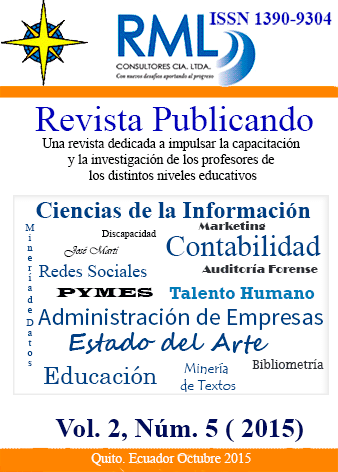Abstract
Videoconferencing is one of the Information Technologies and the most important in the era of Information Communications; it facilitates interaction between two or more people from different geographical locations providing the exchange of ideas and knowledge. The objective of this article is to describe the video as an interactive educational resource, emphasizing the role of the student at Headquarters José Martí at the University Ignacio Agramonte Loynaz, emphasizing the use of videoconferencing in the process of teaching and learning, contributing to the development of innovative processes and researchers. Among the methods used in the development of work analytic-synthetic, interviews and document analysis technique they were used. As conclusions of the study highlighted that videoconferencing is an educational resource ready to support the teaching-learning process at Headquarters "José Martí". Using it as an educational and interactive resource in the teaching-learning process at Headquarters "José Martí" is important and necessary, because exceeds expectations in higher education, acquiring higher quality university education with the presence of various entities , teachers, experts and professionals from different fields, including new teaching models based on participation and interaction of educators and in the transmission and reception of information, ensuring the direct exchange of knowledge, skills, and training principles and values among students teachers. And finally, the student is the main actor in the process of learning of José Martí Headquarters constituting its main functions receiving information, ownership of content and the acquisition of cognitive skills.
References
Ana García Valcárcel, Luis González Rodero. (s.f.). www.eyg-fere.com. Recuperado el Mayo de 2015, de http://www.eyg-fere.com/ticc/archivos_ticc/anayluis.pdf
Ana Ma. Bañuelos Márquez. (s.f.). http://recursos.udgvirtual.udg.mx/biblioteca/bitstream/123456789/280/1/VIIEIVideoconferencia_Interactiva-UdeG.pdf.
Cabero, J. (2003):”La videoconferencia. Su utilización didáctica”. En Blázquez, F. (cood) (2003): Las nuevas tecnologías en los centros educativos, Mérida, Consejería de Educación, Ciencia y Tecnología de la Junta de Extremadura, 99-115.
Canós Darós Lourdes, Canós Darós Maria José, Liern Carrión Vicente. (s.f.). www.uv.es. Recuperado el 2015
Isela Nadia Álvarez de Lucio. (2010). Lo que necesita saber de una Videoconferencia. e-FORMADORES.
Vigoa, Alonso y Docando, 2014. Transformación, ISSN: 2077-2955, RNPS: 2098, julio-diciembre 2014, 10 (2), 99-108.

This work is licensed under a Creative Commons Attribution-NonCommercial-ShareAlike 4.0 International License.
Copyright (c) 2019 Lilian Vigoa Machin, Ernesto Alejandro Porro Santos, Reynaldo Alonso Reyes
